
First of all, if you’ve never used binoculars on a tripod you are literally missing out. You’re missing out on all kinds of game that you never see if you’re not steady and patient, and a tripod makes you more of both.
The first thing you’ll tell me, though, is that glassing on a tripod is annoying. You have to lug the thing up a mountain, It takes forever to setup, and you can only glass what’s right in front you. And I agree with all those things, but I also know you’ll see more game when your binos are stabilized.
And that’s where the Kestrel monopod comes in. It weigh just 6 ounces, you can set it up in 3 seconds without taking off your pack, and it moves in all dimensions so you can change your view without changing your position or messing with tripod legs. It fits most binoculars that have a standard 1/4″ mount.
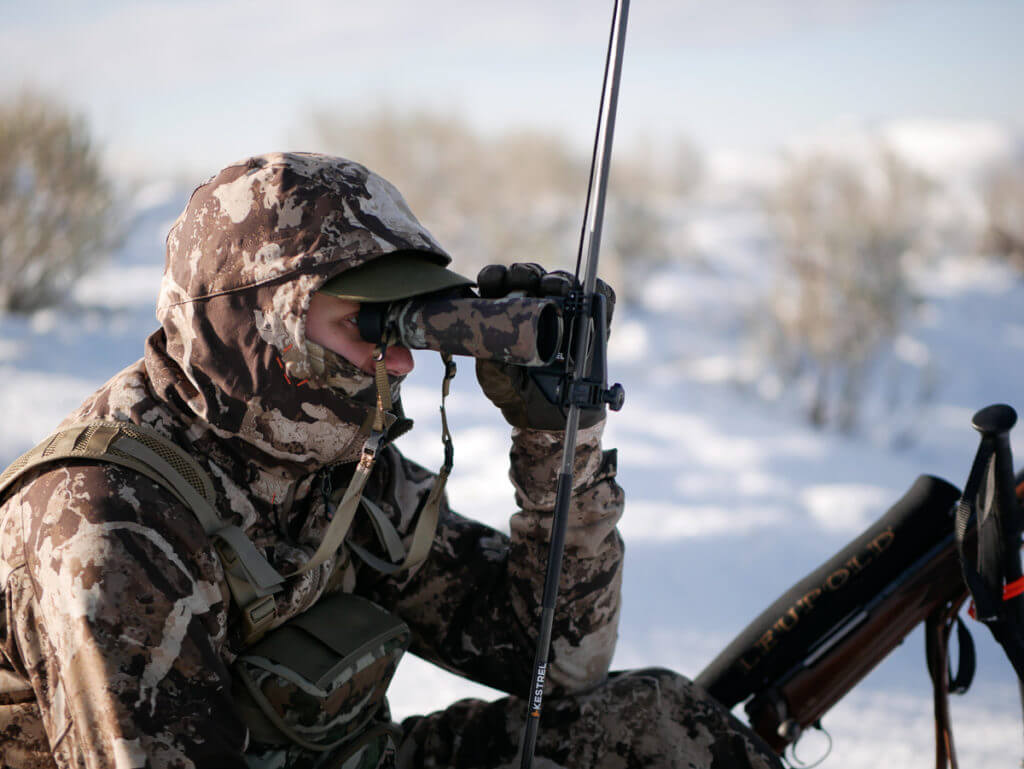
I’ll show you what it is and why I’ve been taking it with me every time I go into the hills.
Lightweight Materials
This monopod weighs just 6 ounces. Compared with small tripods that weigh about 40 ounces, this thing is super lightweight. It’s made from lightweight materials, but not at the expense of durability.
Two carbon fiber poles are connected with an aluminum ferule. At first glance, you’d think it’s basically a tent pole because it’s got a shock cord running though it that keeps it together and allows it to separate and fold in half.
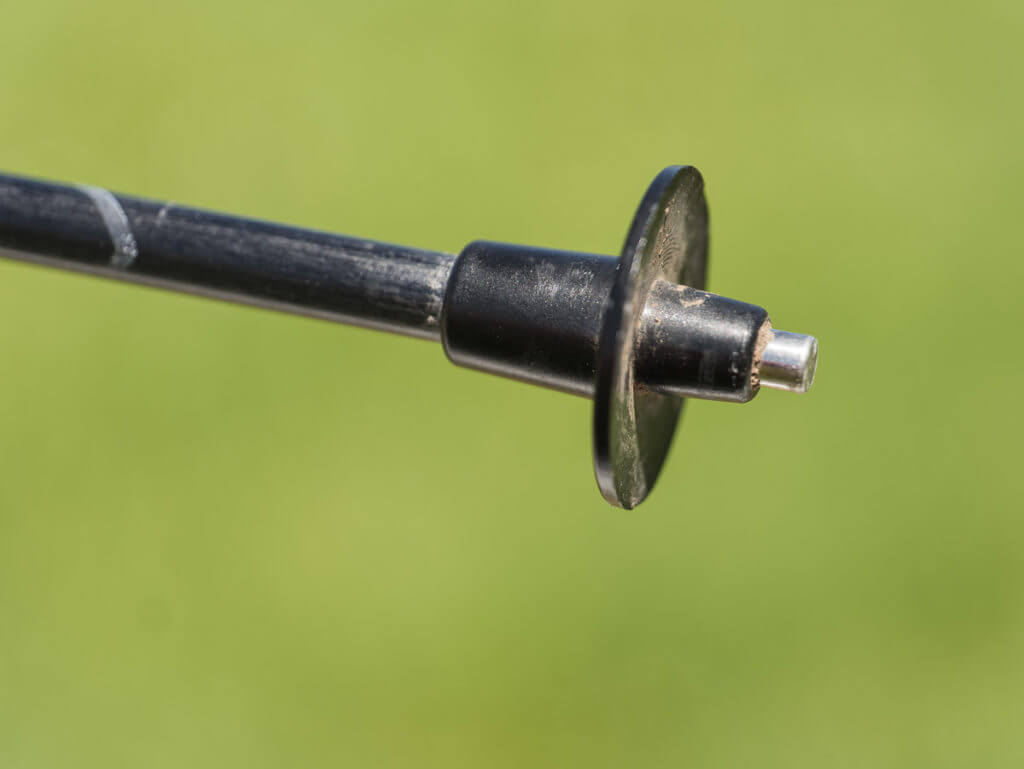
The poles are finer than anything that comes with a tent, however. They are thick and rigid and strong. There is almost no flex, so they support even the heaviest binos without issue.
The ferule is machined from hard anodized 6061 T6 aluminum. The edges are all machined with a cove and radius that allows to match up easily and smoothly. The matte black finish ensures game won’t see a glint from the sun and take off.
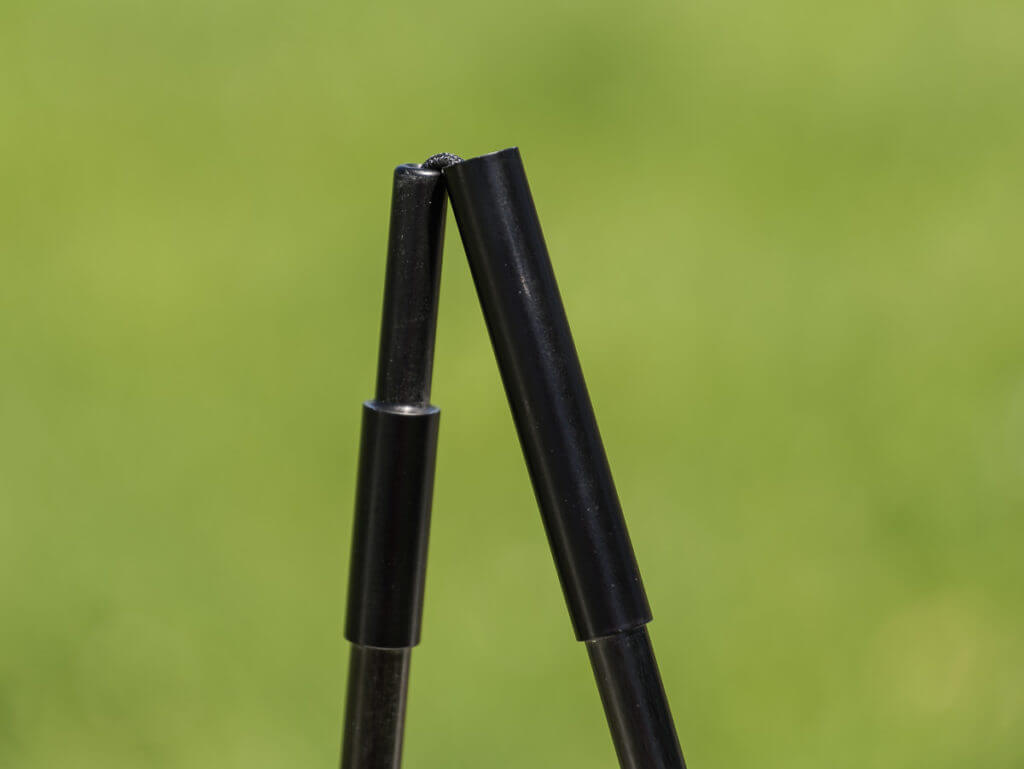
The frame is molded from high-impact plastic that is both rigid and lightweight. The mounting hardware is machined steel. When you hold the monopod you can feel its rigidity and the quality of construction.
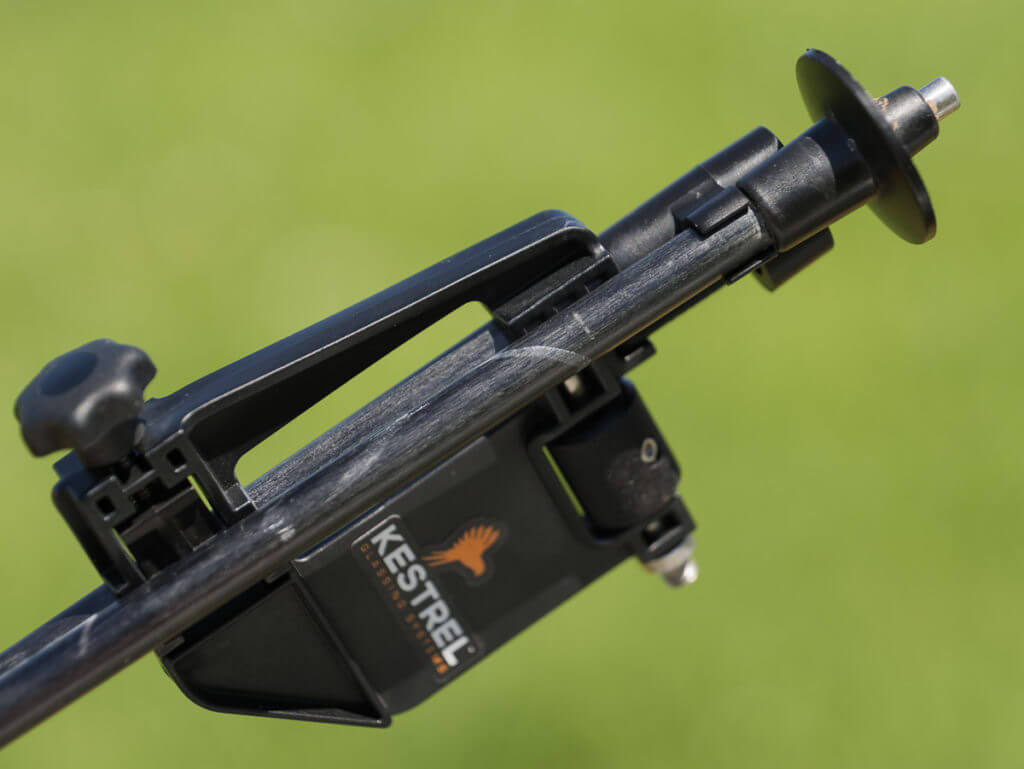
Quick Deploying
I’m already a believer in tripods and I take them every time I hunt and scout. But the thing that keeps me from using my tripod as often as I should on a hunt is the hassle of taking off my pack, getting the tripod out, setting it up, taking it down, putting it back on my pack and putting my pack back on.

The Kestrel deploys like a sword off He-Man’s back and sets up faster than you can say, “By the power of Grayskull.” The poles are smooth and don’t snag on anything as you reach back and pull it up out of the straps on your pack. It’s 23.75″ long collapsed.
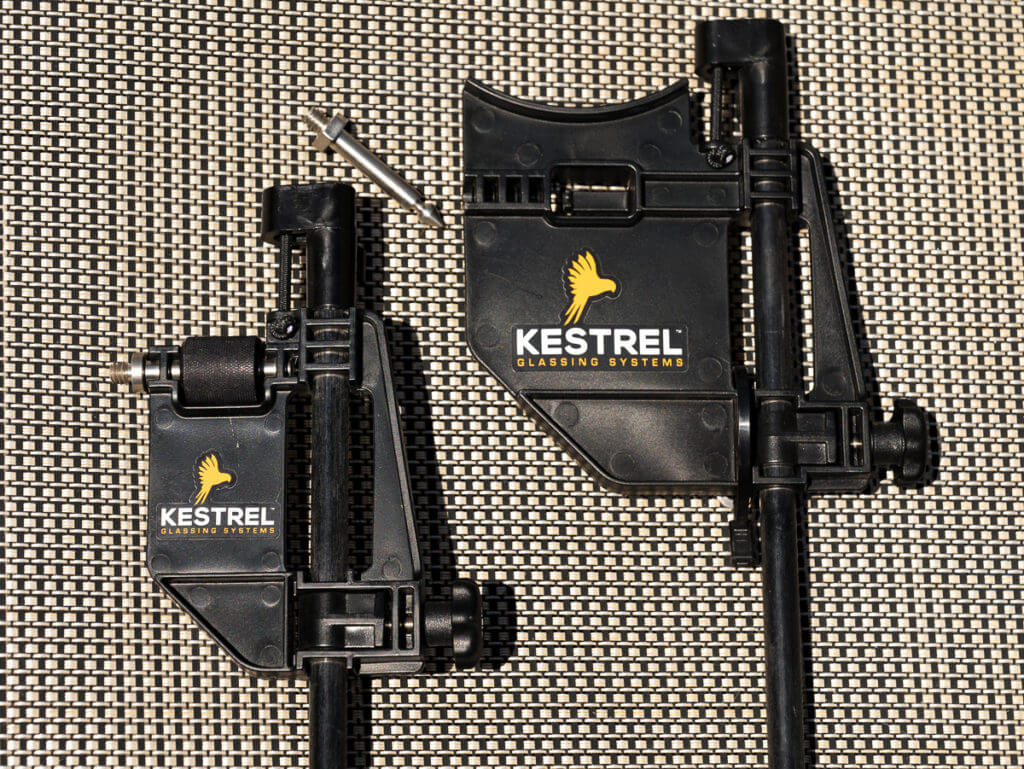
The ends are held together with press clip, so you just pop them apart and snap the ferule together. Your binos attach swiftly, and you just sit down where you are and start glassing. With a little practice, you can slide it back onto your pack on your own, or your buddy can drop it in place (while wishing he’d bought a Kestrel, too).
Freedom To Move
I started by saying that stability is key to glassing more game, but it’s the ability to move that sets this monopod apart from a tripod. The thing that’s bothersome about a tripod is that there is very little range of movement before you have to move your seat, which is a pain on the side of a mountain.
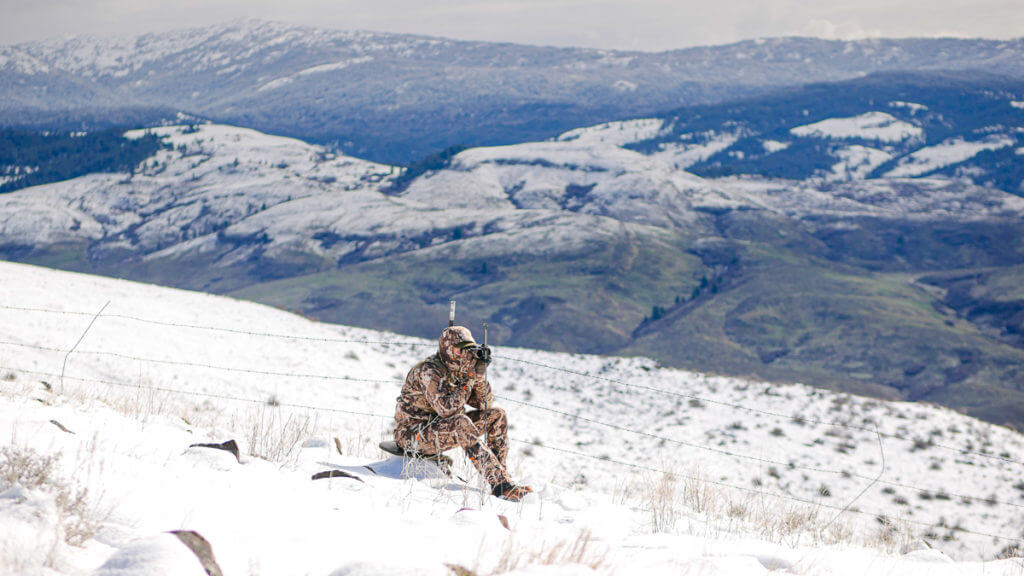
You can only tip it up and down a little bit without changing the height of the center column, and you can only move left and right a little bit without moving the tripod over.
As a monopod, the Kestrel lets you tip and turn any direction without the hassle of moving a tripod, and you can set it between your legs no matter what sitting position you are in.
Gravity Free
The real genius of the Kestrel is its floating carriage. The frame your binos mount to is suspended on the shock cord that runs through the poles. That means that you can freely slide the binos up and down the pole. The shock cord takes all the weight off the binos so that they feel weightless in your hands.
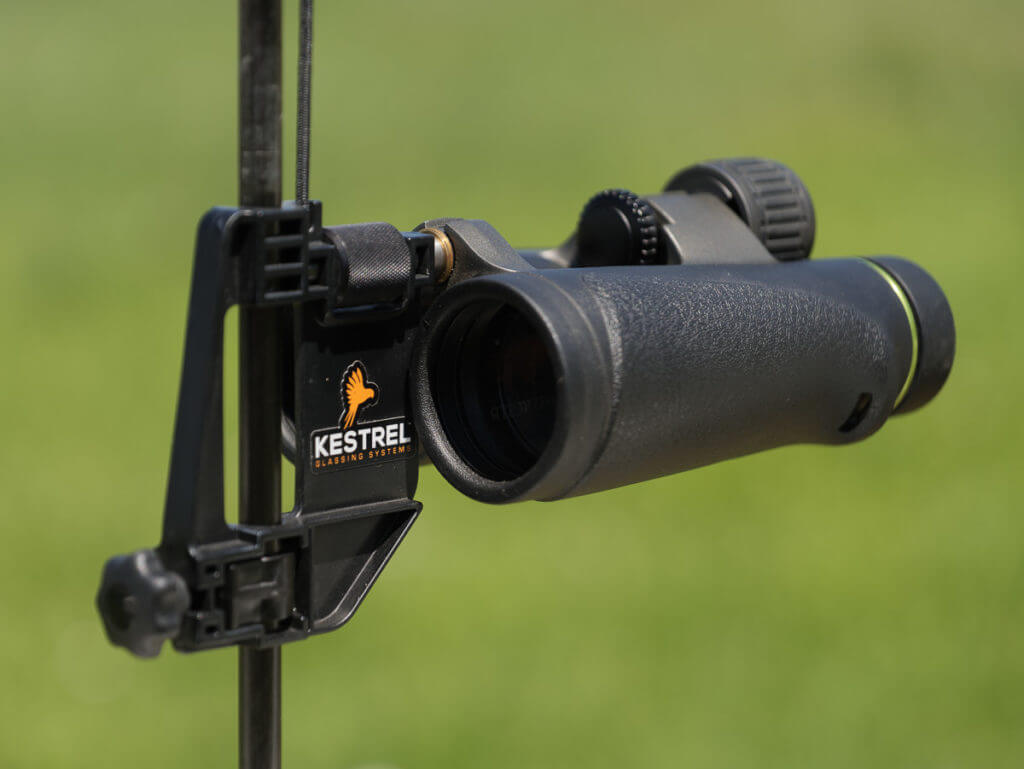
Quality binoculars weigh a fair bit, which keeps you from holding them to your eyes for very long and keeps them from being steady. This weightless adjustment means your arms don’t get fatigued holding them to your face. That means your arms will be more ready for a steady shot when the time comes.
Bonus: Shooting Rest
Binoculars aren’t the only things that need to be steady. Marksmanship is much better with stability, too. There’s a rounded cutout atop the large frame Kestrel to offer a shooting rest in a pinch. You can even rest a camera lens or a spotting scope on there.
It’s not a replacement for shooting sticks or a bipod, but when you’re in waist-high sagebrush without any tree limbs to rest on, it’s much better than nothing.
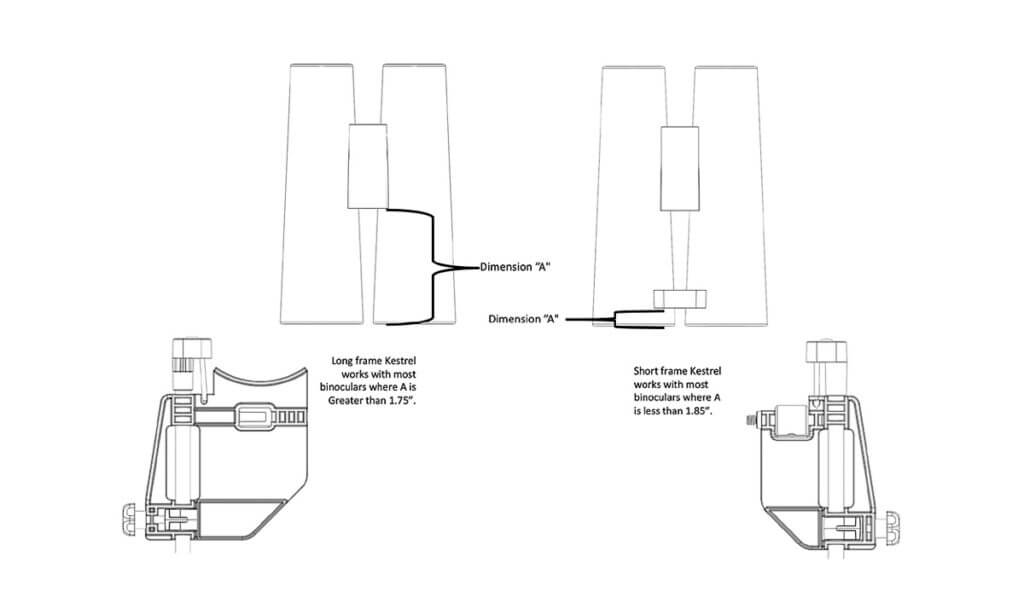
Weak Points
I have just three gripes about the Kestrel Monopod. First, there’s a knob that tightens to keep your binoculars in place vertically on the pole. It’s how you adjust the tension of the shock cord and keep your binos truly weightless. The problem is that if you don’t tighten that knob when you put the monopod on your pack, then it can easily come loose and fall off. Replacement knobs are available and cost $8. I’m told that future versions of the knob may have a lanyard to keep it from falling off.
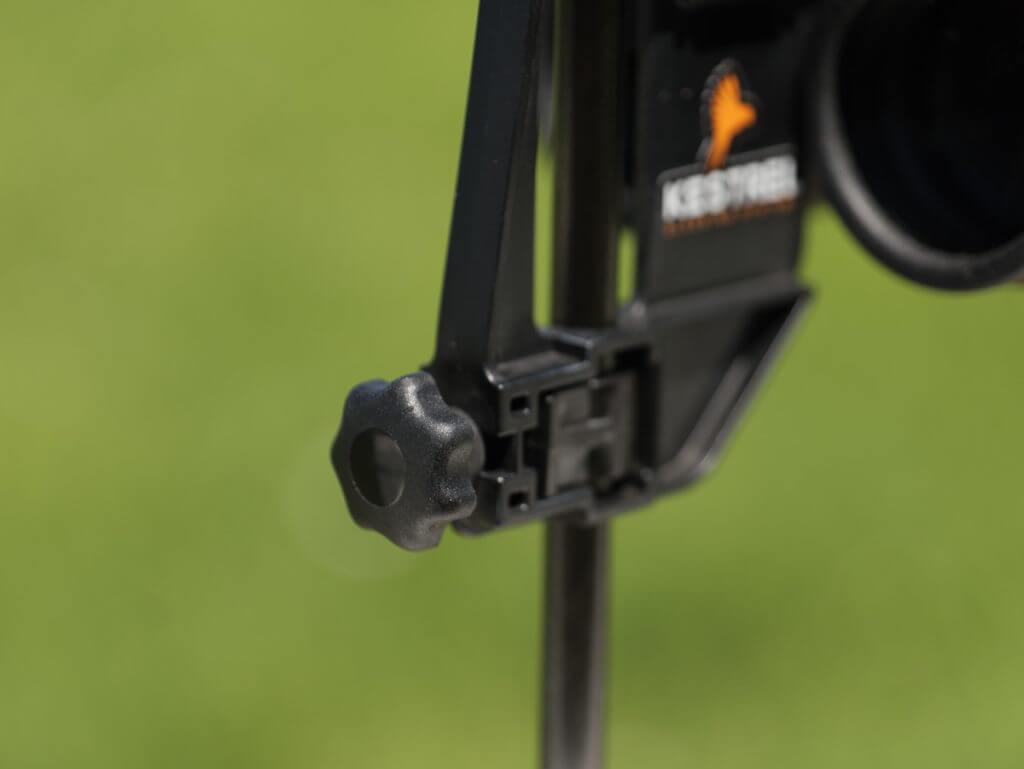
The next thing is that I wish it was taller. I wish I could use it standing, or sometimes kneeling or on a log or something. It’s not been a big problem, but there have been opportunities it would have been nice. It’s about 44″ long.
Lastly, it’s just not possible for a monopod to be as steady as a tripod. Tripods can be rock steady and allow you to count how many bumps are on each tine of an antler. They can also support spotting scopes and guns well.
Kestrel Monopod
The Kestrel is not a total replacement for a tripod, but I’d say it’s 90% as effective at steadying your binoculars and 1000% more user friendly.
Steady binos let you see details more clearly and not hand-holding them makes you more patient and allows you to glass an area more effectively. I know you can hold the brim of your hat, but it’s nothing like as good as a tripod or monopod. Kestrel’s big advantage is being easy to deploy, taking the weight of the binoculars, and allowing full freedom of movement.
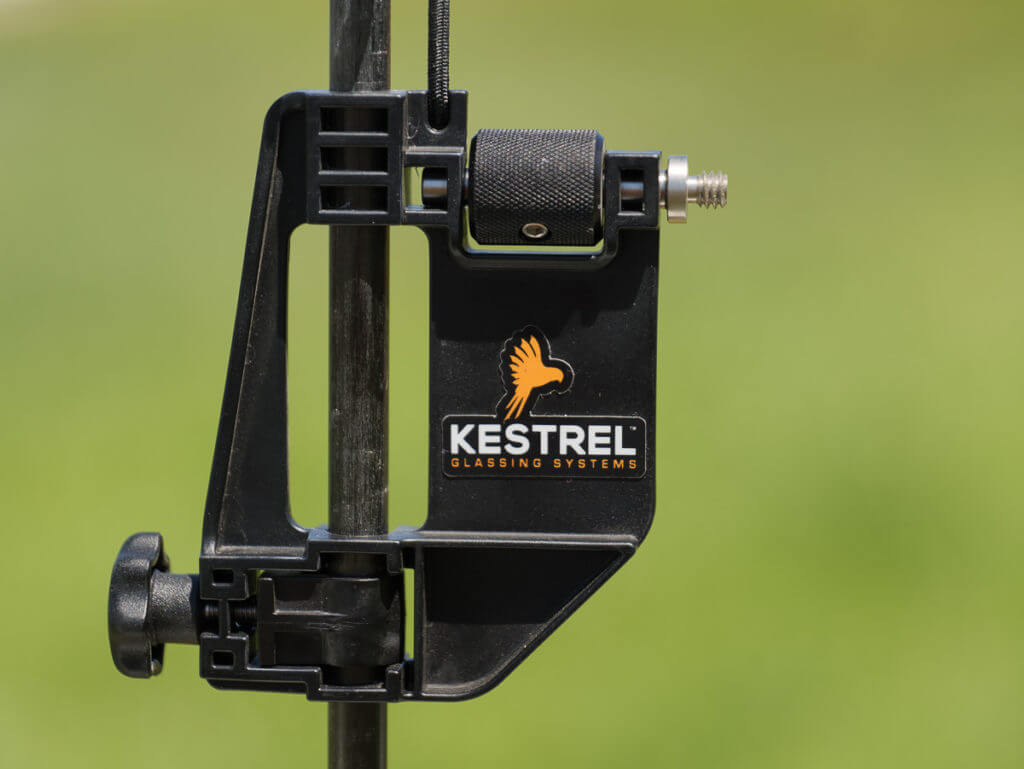
A decent lightweight tripod will cost you several hundred dollars. For $99, the Kestrel could do more to improve your chances this Fall more than many other purchases.
I’ve used it on ten hunts and I keep waiting for something to break or fail, but besides that knob that needs to be tight, I’ve had no issues.
Learn more about the Kestrel monopod and shop at KestrelGlassingSystems.com.